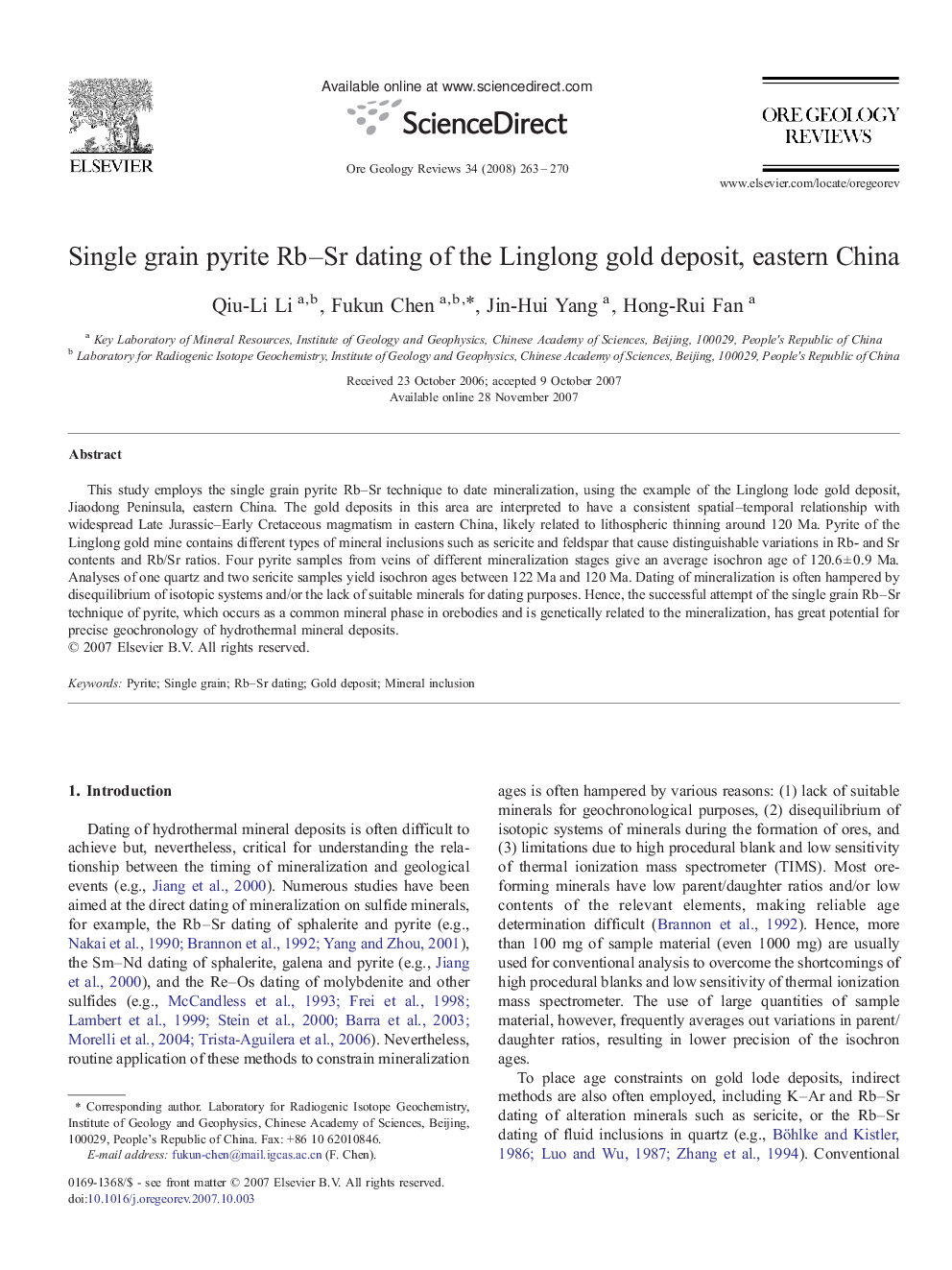| Article ID | Journal | Published Year | Pages | File Type |
|---|---|---|---|---|
| 4697970 | Ore Geology Reviews | 2008 | 8 Pages |
This study employs the single grain pyrite Rb–Sr technique to date mineralization, using the example of the Linglong lode gold deposit, Jiaodong Peninsula, eastern China. The gold deposits in this area are interpreted to have a consistent spatial–temporal relationship with widespread Late Jurassic–Early Cretaceous magmatism in eastern China, likely related to lithospheric thinning around 120 Ma. Pyrite of the Linglong gold mine contains different types of mineral inclusions such as sericite and feldspar that cause distinguishable variations in Rb- and Sr contents and Rb/Sr ratios. Four pyrite samples from veins of different mineralization stages give an average isochron age of 120.6 ± 0.9 Ma. Analyses of one quartz and two sericite samples yield isochron ages between 122 Ma and 120 Ma. Dating of mineralization is often hampered by disequilibrium of isotopic systems and/or the lack of suitable minerals for dating purposes. Hence, the successful attempt of the single grain Rb–Sr technique of pyrite, which occurs as a common mineral phase in orebodies and is genetically related to the mineralization, has great potential for precise geochronology of hydrothermal mineral deposits.
